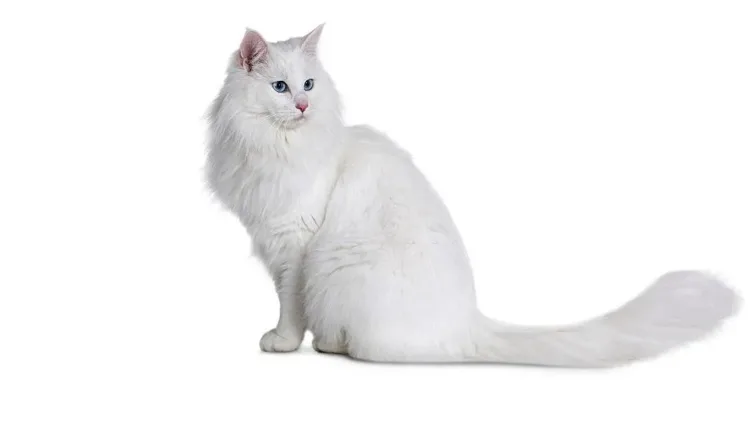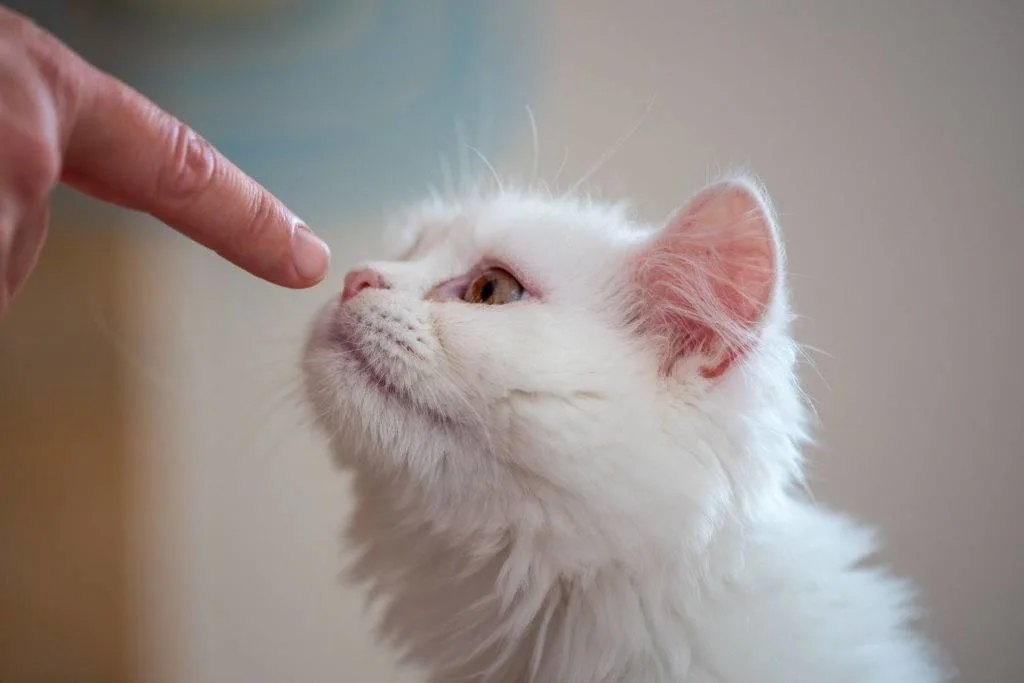Turkish Angora is one of the oldest known cat breeds. It is originated from Kurdistan, Turkey. It was bred systematically even in the 15th century. But the breed nearly died out, so the state of Turkey began a program to save the breed in 1960. Only 30 Turkish angoras were left in 1966, but the number of them increased, and some kittens were exported from Ankara Zoo to other breeders, at first to the USA, where the first litter was born in 1963. The first Turkish Angora came to Finland from Russia in 1990. Now we have about 200 Turkish Angoras in Finland.
This cat is a very friendly and affectionate cat. It takes part in everything you do at home. If it does not have a place on your lap, it sits on your shoulder. It takes part in washing dishes, and it even comes to Sauna (“a hot bathroom,” as we are in Finland) with you. It is said that Turkish Angora is a cat for one person: it is true, that it is possible that it does not show its best properties to your guests, but mostly it shares its love and affection to all humans who share the same home with it.
The Turkish angora is a lively cat, who likes playing, especially with you. It will easily adjust to children, other cats, and dogs, but the greatest pleasure it will get is playing with you. It is happy living indoors also, and it does not need very much space, if only it gets a playmate from you and has a high climbing tree, because it likes to look the world from high. It usually does not climb there but finds another way to get high, as it has strong legs to jump high.
Size and Appearance
Turkish Angora is a balanced, graceful cat. Females are medium-sized, males are larger.
The Head is small or medium-sized, smooth wedge-shaped. The nose is medium in length, with a slight break, but no stop. Chin is gently rounded, and the tip of the chin forms a perpendicular line with the nose.
Ears are large, broad at the base, tufted. Placement high on the head pointed and erected. Eyes are large, almond-shaped, slanting slightly upwards. All colors are accepted.
The neck is medium in length, slim and graceful.
Finely boned, the chest is slender, the body is slender, graceful, and flexible. The rump is slightly higher than the shoulders. Legs are long, hind legs longer than the front. Paws small, round and dainty. Tufts between toes. Persian type body is penalizing.
The tail is long and tapering from a wide base to a narrow end with a full brush.
The coat is semi-long, but the ruff is long, finely textured, and silky and should have a silk like sheen. No underwool. All colors are accepted, excluding color point, chocolate, lilac, cinnamon, and beige, divided into nine color groups.
Remarks: Jowls are accepted to adult males, the ruff is ready only after one year, and summer coats are much shorter than the winter coat.
Points:
- Head (shape, nose, forehead, chin, ear shape, and placement) 25 points
- Eyes (shape and placement) 10 points
- Body (shape, size, bone structure, legs, paws) 30 points
- Tail (shape and length) 10 points
- Coat (texture, length) 20 points
- Condition 5 points


